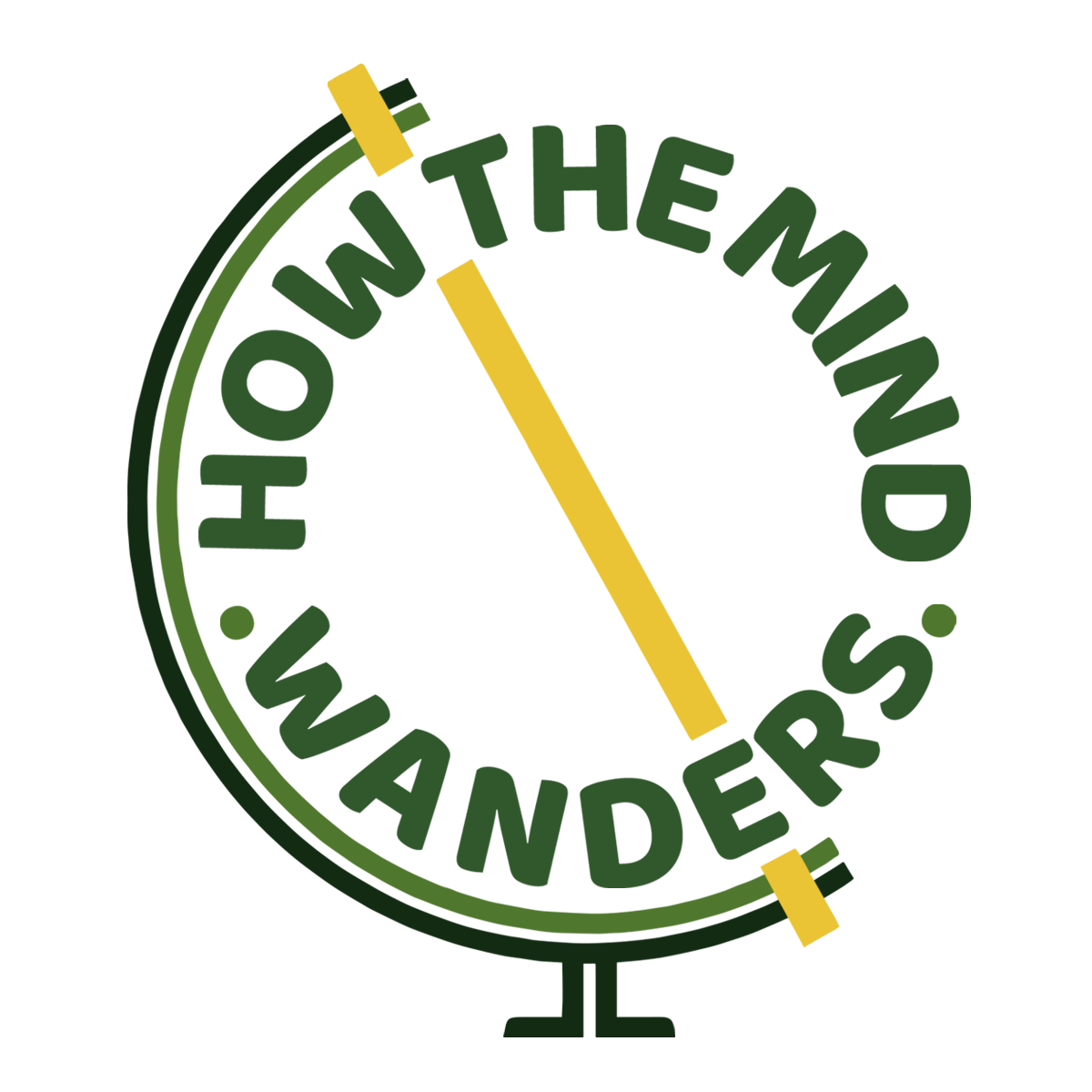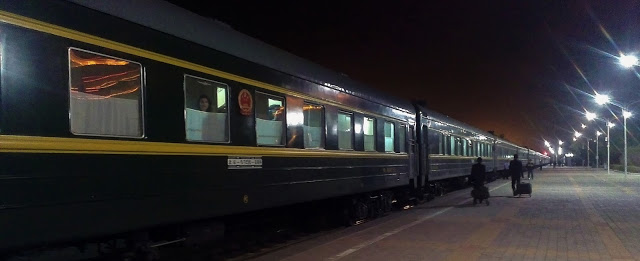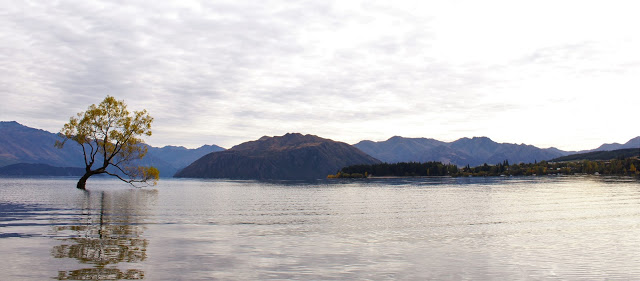The Long Journey Home: All The Trains
‘Faster than fairies, faster than witches, bridges and houses, hedges and ditches…’ – an excerpt from Robert Lewis Stevenson’s poem ‘From a Railway Carriage’.
Taking the Train
I tend to share stories about my travels, rather than the practicalities of a trip. However, having completed our Long Journey Home, posting about the practicalities of catching all the trains is important. It was a key component of our trip, after all.
As such, I’ve written about all the trains that we took from China to London. We aimed to travel our entire route by train, only to see our plans scuppered by unforeseen circumstances in Munich. However, travelling overland from China all the way home was exceptional. The practicalities of such a venture should be covered.
The First Leg – Trans-Mongolian
As we rode from China to Moscow, our route was not strictly the Trans-Siberian that most people are familiar with. The Trans-Mongolian, which branches off the Moscow-Vladivostok route near Irkutsk, travels south, through Mongolia, before ultimately reaching Beijing.
This part of the journey covers an impressive 9,000km from Beijing to Moscow. It crosses five time zones and some of the most remote and bleak landscapes in the world, from the Mongolian steppe and Gobi desert to the never-ending Siberian forests.
There are two border crossings – China-Mongolia and Mongolia-Russia. Unless the journey is broken down into sections, you can spend a week on the train without stopping. Even if you do break the journey down, you can still spend large amounts of time on the train. Our longest period of non-stop time on board was a wearying 68 hours from Krasnoyarsk to Moscow.
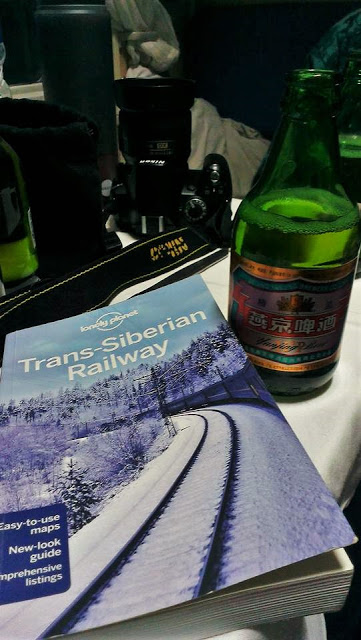
Real Russia
We booked all of our Trans-Mongolian train tickets through Real Russia. Their website is extremely easy to use. So easy that we used them to get our Russian visas too. You can read more about that here.
Booking the tickets ourselves, rather than picking one of their prearranged tours, brought the cost of tickets down to just £480 each. Less than half the price than a tour and it left us with the freedom to decide where we stopped and for how long. I would highly recommend using Real Russia’s ticket booking tool. It made buying tickets extremely easy.
Real Russia issue tickets for each leg of the journey either as e-tickets or as tickets that you must go and print out to present when boarding the train. E-tickets are obviously the most useful and I hope that in future, Real Russia move towards using these all the time.
The tickets we had to print out were rather more annoying. Most of our accommodation did not have printers and we often wasted time finding places where we could print tickets.
In hindsight, we should have printed everything before our trip. However, we were not charged anywhere to print documents. Additionally, without exception, library staff across Russia were helpful and friendly. Google Translate is your friend in such situations!
Boarding the Train
Stations across Russia are grand and ornate, without exception. Staff were as helpful as possible with a language barrier. The display boards were mostly in Cyrillic. I’d recommend leaving extra time to ensure you find the right platform and train.
Remember – all Trans-Siberian train run on Moscow time. They’ll be displayed at stations on Moscow time. If you’re two, three, four hours ahead, then you need to account for that and check you’re getting the correct train. It’s useful to be able to tell local time and Moscow time, on your phone for example.
On arriving at the train, you must present your ticket and passport to the guard at the door of your carriage. Your name should be on their list and they’ll check your passport before letting you board. The guards may seem strict, but they’re only doing their job and usually end up letting you board with a nod and a smile as they return your documents. And just like that, you’ll be on your way!
Second Leg – Moscow, St Petersburg and Minsk
We had such a good experience with Real Russia when booking our Trans-Mongolian tickets that we booked the train tickets from Moscow to St. Petersburg and from St. Petersburg to Minsk through them too. As recommended before, use their ticket booking tool. Simply enter in the cities you wish to travel between and the time and date you want to travel. It couldn’t be easier!
A point to note: Real Russia are acting as ticket agents. As such, the tickets are slightly more expensive than if you were to buy locally. However, it is a lot easier to buy through Real Russia than try to communicate with Russians at a train station and buy a ticket there. In our experience, most Russians spoke little, if any, English. For peace of mind, I would definitely recommend spending a little more and having the tickets prior to travel.
Additionally, when you apply for your Russian visa, you’ll need to provide a detailed travel itinerary, including information about the trains you’ll be taking. This is another excellent reason to acquire your tickets beforehand.
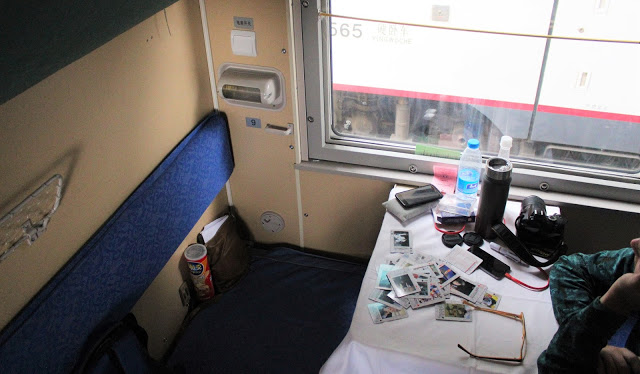
Shorter Train Trips
The process with the tickets for the Moscow-St Petersburg and St-Petersburg-Minsk trains was identical to that on the Trans-Mongolian. Real Russia issue the tickets via email and you print it off to present when boarding the train, along with your passport.
The journey from Moscow to St. Petersburg took approximately six hours. We paid the same amount for a ticket that included a meal as a ticket that didn’t include a meal. I know, we were a bit confused by that too. This train was extremely comfortable. The meal, when served, was basic but filling. I also bought a coffee on board which was pretty good!
The train from St. Petersburg to Minsk is an overnight train and there are no border crossings, so you can get a good night’s sleep in! Make the most of it, because the train from Minsk to Warsaw crosses a hard border and we got very little sleep the following night.
A transit visa for Belarus.
If, like us, you are passing through Belarus from Russia to Poland by train, then you’ll need a transit visa. At the time of writing, the transit visa cost €40 when obtained in Moscow. It is valid for two days, so be sure that your train leaves Belarus within that time frame
Getting a transit visa for Belarus was a slightly painstaking process in Moscow. Evidence must be provided for your inbound and outbound trains, along with a completed application form and a passport size photo. The embassy in Moscow was disorganised. Exercise patience!
We eventually got our visa for 30th and 31st May, so we hopped off our train in Minsk early in the morning and departed late in the evening for our next destination. This meant we had a full day to explore Minsk which, to be honest, is probably all you’ll really need.
Third Leg – Minsk, Warsaw and Krakow
It took us a while to locate a website where we could book train tickets from Minsk to Warsaw. Real Russia did not sell them, and we experienced a lot of trouble booking through other websites. However, I feel happy to recommend this site for train bookings from Minsk to Warsaw. It is in English and is relatively simple to understand and use. To book tickets between Warsaw and Krakow, we used the PKP Intercity website. Again, this site was easy to use.
I downloaded our tickets for both trains onto my phone and showed them to the guard before we boarded on both occasions. As long as the bar codes can be scanned, there should be no issue if you do the same.
A Long Border Crossing and a Quick Intercity
The train from Minsk to Warsaw was a night train. It included the longest border crossing we experienced. We tried to sleep, but got woken several times for document checks and compartment searches. Our sleep was broken!
This train was the most modern we travelled on during our entire trip. It had excellent facilities and clean compartments. I was thrilled to discover a shower on board!
By contrast, the train from Warsaw to Krakow was a day train that took approximately six hours. It was strange to spend so little time on board a train, when we had grown used to extended periods on board!
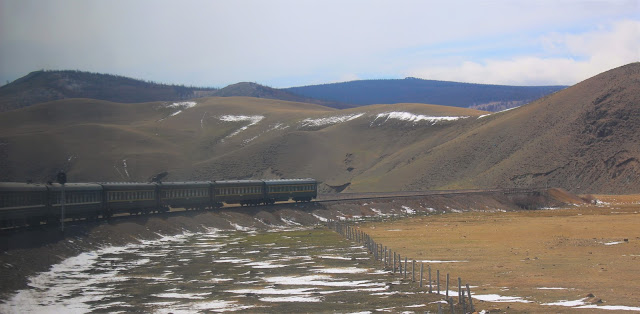
Fourth Leg – Krakow to Munich, via Budapest and Prague
P and I used Interrail passes for this section of our trip. When we travelled, we opted for the Global Pass which enabled us to take five journeys in fifteen days. This option is no longer available – you can see what options are currently available here, and how much each option costs.
At the time, the five journey option allowed us to travel from Krakow to Budapest, Budapest to Prague, Prague to Munich and supposedly, Munich to Paris, with one journey spare.
The trains between Krakow, Budapest, Prague and Munich were all short trips in comparison to some of our other train journeys. Most were no more than a few hours long, although we did take a couple of overnight trains. Due to the smaller travel distances, it’s possible you’ll arrive in the new city very early if you travel overnight. Be prepared to wait for cafes to open and consider booking earlier accommodation check ins.
The Global Interrail Pass
In hindsight, if we were to take this trip again, I think we would steer clear of using an Interrail pass again. At the time, it seemed like this would be our cheapest option. However, there are hidden costs on top of purchasing the pass that we only became aware of after we’d bought it.
For example, despite having a pass, we still needed to reserve seats or beds on each train prior to travel. This cost €5-10 per person each time when we travelled, and in some instances, it was even more expensive than this.
I also think that we tried to do this section of the journey too much on the fly. If we’d planned exactly what dates we would be travelling between cities, we could have pre-booked tickets separately using local websites and probably spent less altogether than we did with the pass and seat reservations.
The pass was problematic too. Several of the train guards didn’t seem to understand the passes and one even messed up one of our trips entirely. He added an extra trip onto our pass because we travelled overnight, despite the pass rules clearly stipulating that travel after a certain time one day counts only as one journey. I was on edge using the pass.
Finally, seat reservations in France cost approximately €30. As we were on a tight budget by this point, it seemed a large amount to pay on top of the pass we had already procured.
Basically, while the passes may have some uses, there were many shortcomings that needed to be addressed by Interrail. The instructions and rules needed to be clearer, for both travellers using the pass and to guards and train conductors who stamp the pass and let you travel.

Fifth Leg – Munich to Paris
Unfortunately, in another major shortcoming, our Interrail passes didn’t allow us to travel on certain trains through France. An apologetic ticket officer informed us that all trains that our passes were valid on were booked already. There were no trains on our travel date. To say we were pissed is putting it mildly!
Taking the Bus
With no trains available, we had to resort to booking a nineteen hour overnight Megabus from Munich to Paris. This cost us £30 each and irritated us immensely. Our plans to travel the entire Long Journey Home by train were blown out the water. It felt like a massive blow.
The bus wasn’t comfortable for sleeping overnight. However, it did have free, good WiFi and plug sockets to charge electronics. We also stopped long enough in Cologne to nip off and grab a McDonald’s for tea, so it wasn’t all bad. Despite running late after heavy traffic in Frankfurt, it made good time and we eventually arrived in Paris early on our final morning of the trip.
Sixth and Final Leg – Paris to London
We booked a Eurostar train from Paris to London six months in advance and it cost us £40 each.
Booking so far in advance came with its main advantage – the tickets were cheap – and a few disadvantages. We were inflexible about the date and time that we travelled back to London. This ultimately meant that we had no option but to catch that bus to Paris. If we hadn’t, we would have missed the Eurostar back to the UK.
Who knows? If we had been able to be flexible with our train booking back to London, a train from Munich to Paris would have been available to us. However, it is all ifs, buts and maybes. There’s nothing we can do to change that now!
The Eurostar was comfortable, the train wasn’t busy and the journey went by remarkably quickly once we had bought our last train beers from the bar car. Border control on the French side was easy and we passed through without problems.
If you arrive in Paris from elsewhere and have a few spare hours to explore the French capital before boarding your train back to the UK, I’d recommend using their luggage storage facilities and heading out into the city. We paid €10 between two of us for 24 hours of storage and could fit our two big backpacks and two smaller rucksacks into one locker with ease.
The Conclusion
Travelling by train across two continents wasn’t without its difficulties, and we learnt a lot along the way. I think it pays to be a little more organised than we were. Print your tickets before you travel. Try to book your trains through Europe separately if you can fix travel dates, as I honestly believe it will save you money and stress!
And if you’d like even more in depth information about train travel throughout Asia and Europe, check out The Man in Seat 61. His website is an incredibly useful resource.

